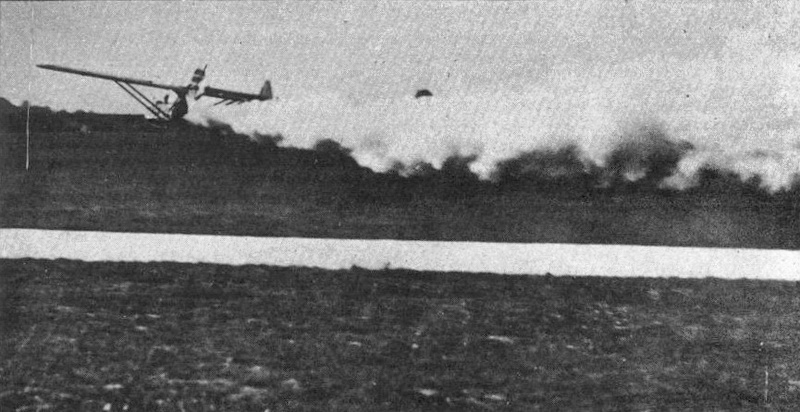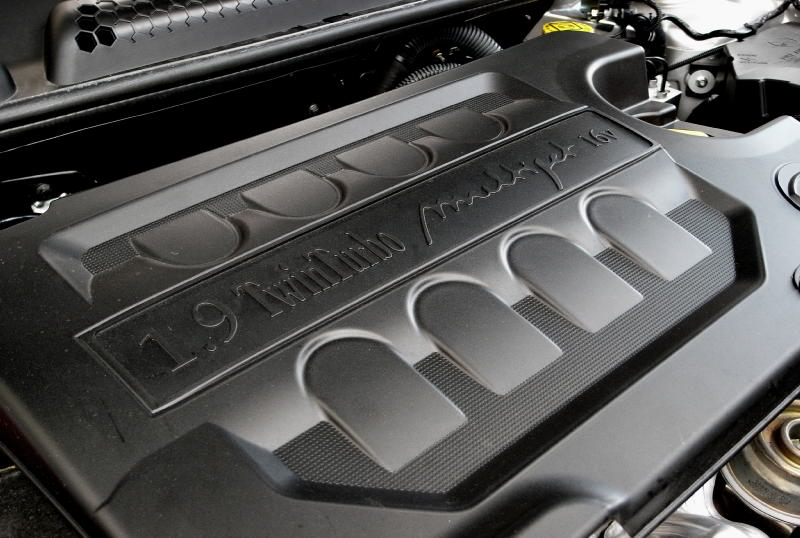|
Opel Meriva
The Opel Meriva is a car manufactured and marketed by the German automaker Opel on its Corsa platform, from May 2003 until June 2017 across two generations. Described as a mini MPV, it was marketed as the Vauxhall Meriva in the United Kingdom, while in Latin America, the first generation model was marketed as the Chevrolet Meriva. __TOC__ First generation (2003) The first generation, named "Meriva A", was based on the third generation Opel Corsa C. It went on sale in May 2003. The first official pictures of the Meriva were released in August 2002. It has been described as a mini MPV, a supermini-MPV, a small people carrier, and an estate car. Like its larger counterpart, the Zafira, the Meriva has a flexible interior, marketed as "FlexSpace". Although it only has five seats divided into two rows, the second row can slide forward or backward, or be flattened into the floor, making a flat, level platform for increased boot space. The second row can accommodate two or thre ... [...More Info...] [...Related Items...] OR: [Wikipedia] [Google] [Baidu] |
Opel
Opel Automobile GmbH (), usually shortened to Opel, is a German automobile manufacturer which has been a subsidiary of Stellantis since 16 January 2021. It was owned by the American automaker General Motors from 1929 until 2017 and the PSA Group prior to its merger with Fiat Chrysler Automobiles to form Stellantis in 2021. Most of the Opel lineup is marketed under the Vauxhall Motors, Vauxhall brand in the United Kingdom since the 1980s. Some Opel vehicles were badge engineering, badge-engineered in Australia under the Holden brand until 2020, in North America and China under the Buick, Saturn Corporation, Saturn (until 2010), and Cadillac brands, and in South America under the Chevrolet brand. Opel traces its roots to a sewing machine manufacturer founded by Adam Opel in 1862 in Rüsselsheim am Main. The company began manufacturing bicycles in 1886 and produced its first automobile in 1899. With the Opel RAK program, the world's first rocket program, under the leadership of F ... [...More Info...] [...Related Items...] OR: [Wikipedia] [Google] [Baidu] |
Multi-valve
A multi-valve or multivalve Four-stroke engine, four-stroke internal combustion engine is one where each Cylinder (engine), cylinder has ''more than two'' poppet valve, valves – more than the minimum required of one of each, for the purposes of air and fuel intake, and Exhaust system, venting exhaust gases. Multi-valve engines were conceived to improve one or both of these, often called "better breathing", and with the added benefit of more valves that are smaller, thus having less mass in motion (per individual valve and spring), may also be able to operate at higher revolutions per minute (RPM) than a two-valve engine, delivering even more intake an/or exhaust per unit of time, thus potentially more power (physics), power. Multi-valve rationale Multi-valve engine design A multi-valve engine design has three, four, or five poppet valves per cylinder, to achieve greater performance. In automotive engineering, any four-stroke internal combustion engine needs at least two v ... [...More Info...] [...Related Items...] OR: [Wikipedia] [Google] [Baidu] |
Automatic Transmission
An automatic transmission (AT) or automatic gearbox is a multi-speed transmission (mechanics), transmission used in motor vehicles that does not require any input from the driver to change forward gears under normal driving conditions. The 1904 Sturtevant "horseless carriage gearbox" is often considered to be the first true automatic transmission. The first mass-produced automatic transmission is the General Motors ''Hydramatic'' two-speed hydraulic automatic, which was introduced in 1939. Automatic transmissions are especially prevalent in vehicular drivetrains, particularly those subject to intense mechanical acceleration and frequent idle/transient operating conditions; commonly commercial/passenger/utility vehicles, such as buses and waste collection vehicles. Prevalence Vehicles with internal combustion engines, unlike electric vehicles, require the engine to operate in a narrow range of rates of rotation, requiring a gearbox, operated manually or automatically, to drive t ... [...More Info...] [...Related Items...] OR: [Wikipedia] [Google] [Baidu] |
Manual Transmission
A manual transmission (MT), also known as manual gearbox, standard transmission (in Canadian English, Canada, British English, the United Kingdom and American English, the United States), or stick shift (in the United States), is a multi-speed motor vehicle Transmission (mechanical device), transmission system where gear changes require the driver to manually select the gears by operating a gear stick and clutch (which is usually a foot pedal for cars or a hand lever for motorcycles). Early automobiles used ''sliding-mesh'' manual transmissions with up to three forward gear ratios. Since the 1950s, ''constant-mesh'' manual transmissions have become increasingly commonplace, and the number of forward ratios has increased to 5-speed and 6-speed manual transmissions for current vehicles. The alternative to a manual transmission is an automatic transmission. Common types of automatic transmissions are the Automatic transmission#Hydraulic automatic transmissions, hydraulic automatic ... [...More Info...] [...Related Items...] OR: [Wikipedia] [Google] [Baidu] |
Circle L Engine
The Circle L, originally the Isuzu 4EE2, is an automobile engine produced by GM Powertrain Poland in Poland. It is a inline-four 16-valve turbocharged diesel engine designed by Isuzu as part of their E-family of compact diesel engines. The engine was produced in Tychy, Poland by Isuzu Motors Polska (later GM Powertrain Poland) for use in Opel, Vauxhall, Chevrolet, and Honda vehicles. History In the late nineties the Japanese company Isuzu, which was known for the efficiency of its diesel engines, collaborated with General Motors on a new diesel engine for the European market for Opel and Vauxhall. For this purpose it opened a new plant in the city of Tychy, in Poland, called Isuzu Motor Polska. The engine blocks were supplied from Japan. By May 2004, after about five years in production, Isuzu Motors Polska had built one million 4EE2 engines. At the time the engine was developed, GM owned a 49% share of Isuzu, but later dissolved its stake and reacquired a 12% share for US$80& ... [...More Info...] [...Related Items...] OR: [Wikipedia] [Google] [Baidu] |
Fiat JTD Engine
Multijet is a Fiat and General Motors joint venture, established in 1996, in manufacturing diesel engines with turbo and common rail direct injection technology. Most of the Fiat S.p.A., Fiat Professional, Groupe PSA (Peugeot and Citroën), Alfa Romeo, Maserati, Lancia, Chrysler, Chevrolet, Daewoo Motors, Cadillac, Karsan, Temsa, Iveco, Jeep, Opel, Vauxhall Motors, RAM Trucks, Mitsubishi Fuso, Maruti Suzuki, Suzuki, Tata Motors and Saab Automobile branded vehicles are equipped with Multijet engines. Ownership of some Fiat Multijet designs is shared with General Motors as part of a settlement of the failed merger between the two auto conglomerates. The GM Powertrain Torino group in Turin, Italy, manages its interest in these engines. Some PSA Peugeot Citroën diesel engines are also rebadged JTD units, and vice versa. Fiat's common-rail diesel engine is also known as JTD, an initialism of UniJet Turbo Diesel.autobild.deJTD - Lexikon - autobild.de accessdate: 19. June 2019 C ... [...More Info...] [...Related Items...] OR: [Wikipedia] [Google] [Baidu] |
Diesel Engine
The diesel engine, named after the German engineer Rudolf Diesel, is an internal combustion engine in which Combustion, ignition of diesel fuel is caused by the elevated temperature of the air in the cylinder due to Mechanics, mechanical Compression (physics), compression; thus, the diesel engine is called a compression-ignition engine (CI engine). This contrasts with engines using spark plug-ignition of the air-fuel mixture, such as a petrol engine (gasoline engine) or a gas engine (using a gaseous fuel like natural gas or liquefied petroleum gas). Introduction Diesel engines work by compressing only air, or air combined with residual combustion gases from the exhaust (known as exhaust gas recirculation, "EGR"). Air is inducted into the chamber during the intake stroke, and compressed during the compression stroke. This increases air temperature inside the Cylinder (engine), cylinder so that atomised diesel fuel injected into the combustion chamber ignites. The torque a dies ... [...More Info...] [...Related Items...] OR: [Wikipedia] [Google] [Baidu] |
Z18XE
The GM Family I is a Inline-four engine, straight-four piston engine that was developed by Opel, a former subsidiary of General Motors and now a subsidiary of PSA Group, to replace the Vauxhall OHV, Opel OHV engine, Opel OHV and the smaller capacity Opel cam-in-head engine, Opel CIH engines for use on small to mid-range cars from Opel/Vauxhall Motors, Vauxhall. The engine first appeared in the Opel Kadett#Kadett D (1979–1984), Opel Kadett D in 1979, and shortly afterwards in its Vauxhall badged sister – the Vauxhall Astra#First generation (1980–1984), Vauxhall Astra Mk.1 in 1980. Despite this, the previous Opel OHV engine continued to be sold in entry level versions of the Opel Kadett/Astra and Corsa throughout the 1980s. The Family I is informally known as the "small block", since it shares its basic design and architecture with the larger GM Family II engine, Family II unit (correspondingly known as the "large block"), which covers the mid range and higher engine capac ... [...More Info...] [...Related Items...] OR: [Wikipedia] [Google] [Baidu] |
Turbocharger
In an internal combustion engine, a turbocharger (also known as a turbo or a turbosupercharger) is a forced induction device that is powered by the flow of exhaust gases. It uses this energy to compress the intake air, forcing more air into the engine in order to produce more power for a given displacement. Turbochargers are distinguished from superchargers in that a turbocharger is powered by the kinetic energy of the exhaust gases, whereas a is mechanically powered (usually by a belt from the engine's crankshaft). However, up until the mid-20th century, a turbocharger was called a "turbosupercharger" and was considered a type of supercharger. History Prior to the inv ...[...More Info...] [...Related Items...] OR: [Wikipedia] [Google] [Baidu] |
GM Family 1 Engine
The GM Family I is a straight-four piston engine that was developed by Opel, a former subsidiary of General Motors and now a subsidiary of PSA Group, to replace the Vauxhall OHV, Opel OHV and the smaller capacity Opel CIH engines for use on small to mid-range cars from Opel/Vauxhall. The engine first appeared in the Opel Kadett D in 1979, and shortly afterwards in its Vauxhall badged sister – the Vauxhall Astra Mk.1 in 1980. Despite this, the previous Opel OHV engine continued to be sold in entry level versions of the Opel Kadett/Astra and Corsa throughout the 1980s. The Family I is informally known as the "small block", since it shares its basic design and architecture with the larger Family II unit (correspondingly known as the "large block"), which covers the mid range and higher engine capacities up to 2400cc. Originally produced at the Aspern engine plant, production was moved to the Szentgotthárd engine plant in Hungary with the introduction of the DOHC versio ... [...More Info...] [...Related Items...] OR: [Wikipedia] [Google] [Baidu] |
Z16SE
The GM Family I is a straight-four piston engine that was developed by Opel, a former subsidiary of General Motors and now a subsidiary of PSA Group, to replace the Vauxhall OHV, Opel OHV and the smaller capacity Opel CIH engines for use on small to mid-range cars from Opel/Vauxhall. The engine first appeared in the Opel Kadett D in 1979, and shortly afterwards in its Vauxhall badged sister – the Vauxhall Astra Mk.1 in 1980. Despite this, the previous Opel OHV engine continued to be sold in entry level versions of the Opel Kadett/Astra and Corsa throughout the 1980s. The Family I is informally known as the "small block", since it shares its basic design and architecture with the larger Family II unit (correspondingly known as the "large block"), which covers the mid range and higher engine capacities up to 2400cc. Originally produced at the Aspern engine plant, production was moved to the Szentgotthárd engine plant in Hungary with the introduction of the DOHC version. ... [...More Info...] [...Related Items...] OR: [Wikipedia] [Google] [Baidu] |






